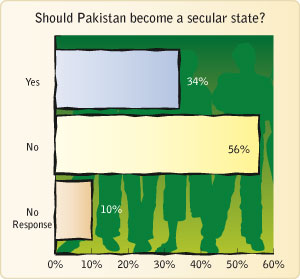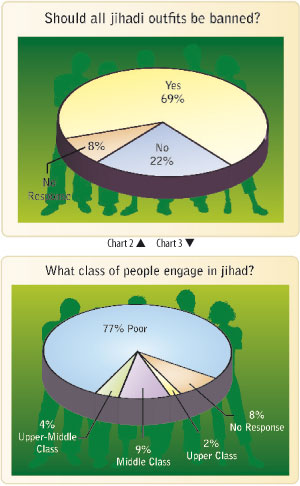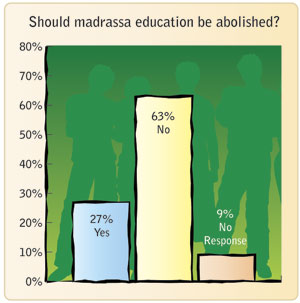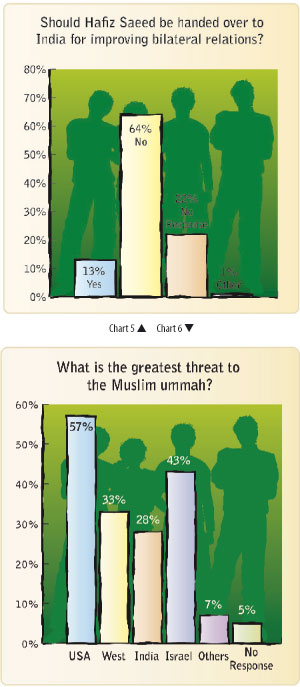The Conservatively Hip
By Ayesha Siddiqa | News & Politics | Published 15 years ago
A few years ago, while walking through the F-9 park in Islamabad I overheard a conversation between two young men. Possibly in their early 20s, they were discussing in earnest how America was fated to self-destruct. From their conversation, it appeared that if given half a chance they might be willing to torch the “evil empire” themselves. Except that making it to the evil empire might have been next to impossible for them post 9/11, for they belonged to a socio-economic group that all jihadis are reputed to come from.
But that line of thinking may change after the recent case of young Faisal Shahzad who was involved in the botched Times Square bombing incident. A scion of an upper-middle class family and a man who had lived and worked in New York, Shahzad did not fit the profile of a terrorist. But shockingly enough, he volunteered to cooperate with the Tehreek-e-Taliban Pakistan (TTP) to avenge the death of Muslims killed in various military operations in the world, especially those involving US forces.
Faisal Shahzad’s case is not an anomaly. There is also Omar Saeed Sheikh, who took to militancy despite the fact that he lived in the West and was educated at an elite institution like the London School of Economics. Sheikh is accused of killing Daniel Pearl on orders from Al-Qaeda and is currently incarcerated in Karachi’s central prison. Then there were the 19 well-educated Middle Eastern hijackers, mostly from affluent backgrounds, who were involved in 9/11. These cases establish the fact that militancy is not limited to just the poor, the illiterate and the less educated segments of society. However, active involvement of the upper-middle or middle class in militancy or terrorism is a rarity because they have more material stakes. But the possibility of their engagement with similar causes in the future cannot be ruled out because Pakistan is a society vulnerable to militancy and radicalism.
Although it is difficult to generalise, one is beginning to see a far greater number of people representing latent radicalism than in the past. They have a tendency to use a single-vision lens for viewing the world and divide it into two brand categories of “us” versus “them” on the basis of religious belief. As a people, we are raised to identify ourselves in a negative connotation of being what our enemy is not. For instance, a Pakistani is what an Indian is not. This is possibly a result of the growing militarisation of society. The emphasis on using military solutions for political problems leads to increased militarisation (consequently, violence and the use of military force have become central to the psychology of our society).
Given these realities, there are many questions worth asking. Why are more youth, especially among the relatively affluent segments of society, embracing a greater religious identity and conservatism related to it? Why is it that we find an increasing number of young men and women among the upper-middle class and the upcoming middle class willing to dress conservatively? What is it that attracts them to conservative pop icons such as the new Junaid Jamshed, Inzamam-ul-Haq and Saeed Anwar? Why have pop icons taken on a visible religious identity, beard et al.? Or is this new popular Islam the new pop culture of Pakistan?

Chart 1
Not too long ago, at the end of the 1980s, Junaid Jamshed appeared as a trendsetter on the Pakistani pop music. The singer and his songs — remember “Dil, Dil, Pakistan” — were the heartbeat of many a young man and woman. But then he stopped singing (except for the occasional naat, or poetry praising the Prophet), changed his style of dress, grew a beard and adapted a conservative social outlook. This is not to suggest that there is anything wrong in being religious. However, the transformation indicates an important social trend that needs be deciphered and understood. It is essential to understand what compels youth from affluent segments of society to become like the pop singer Ali Azmat, who subscribes to Zaid Hamid’s ideology of establishing an Islamic khilafat in Pakistan and in waging the Ghazwa-e-Hind (expedition on Hindustan). Ali Azmat, however, denies this in the Newsline interview that follows, but his TV appearances belie his denials.
One argument being put forth is that an affinity for religious identity is the new modernity. It is no longer about poverty and lack of education, as many might argue. It’s the latest social trend that is being embraced by those who are defined as the elite youth. This term does not only mean youngsters from the upper or upper-middle classes but also includes those that have access to better resources and opportunities. And it’s not just the beard and hijab that symbolise their conservatism or affinity with religious identity but also it is their worldview that indicates a trend towards latent radicalism. It is a view of the ‘other’ that does not incorporate multi-polarity or an accommodation of differences. They see the world from the lens of inter-civilisational conflict.
This was certainly one obvious conclusion of a survey-based study conducted with the help of a research grant from the German Heinrich Boll Foundation. The study predates the Faisal Shahzad case and was meant to be an academic search into assessing the patterns of thinking among the elite youth of Pakistan, a group that has not been studied before.
Based on the opinion of 608 students from Karachi, Lahore and Islamabad, the study’s objective was to determine the socio-political attitudes of youth in elite institutions in the country’s three major cities. The term “elite” refers to educational institutions that are ranked among the top ones due to their performance or their fee structure. Even though many of the students represented middle-class families, they would still be categorised as elite since studying in these institutions would build their capacity to access better and greater opportunities as compared to other youth. Students from the following institutions took part in the survey: Baqai Medical University, SZABIST, Indus Valley School of Arts and Architecture, Greenwich University and the Institute of Business Administration in Karachi; Kinnaird College for Women, Lahore University of Management Sciences, Lahore School of Economics, and National College of Arts in Lahore; National Defence University, Bahria University, IQRA University, National University of Science and Technology and Shifa College of Medicine in Islamabad.
This was a random sample obtained with the help of the respective faculties and/or students. The average sample size was 40 per institution. The study was meant to ascertain whether poverty, lack of education or poor education was the primary driver for latent radicalism among this segment of the youth population. The trends ascertained from this sample survey would then be compared with the existing five studies on youth and radicalism in Pakistan.
The sample comprised 47% females and 53% males. The majority were living in Punjab (39.8%), followed by Sindh (36.8%), Khyber Pakhtunkhwa (4.4%), Islamabad (3.1%), Balochistan (1.3%), Federally Administered Tribal Areas (0.5%), Azad Jammu & Kashmir (0.3%) and Gilgit-Baltistan (0.2%). Some students (13.5%) did not respond. The domicile, however, does not necessarily reflect the actual ethnicity.
Of the students, 14% listed themselves as Punjabi, 14% as Asian, 8% as Pakistani, 8% as Mohajir, 8% as Muslim, 4% as Sindhi, 3% as Pathan, 1% as Memon and 5% as “other.” The ages of those surveyed ranged from 16-31, with the most number of respondents being between 21 and 25.

Chart 2 (top), Chart 3 (bottom)
The 608 respondents were given a three-part questionnaire broken down as follows: a) personal information; b) social attitudes; and c) political opinions. The rather long set of questions (143) were meant to understand the trends in thinking and to make sense of it. For instance, a lot of surveys today indicate rejection of the Taliban and terrorism. However, it is important to understand exactly what people mean when they say that. Rejection of the Taliban does not necessarily imply greater liberal thinking or increased multi-polarity. Latent radicalism, in fact, is not about acceptance or rejection of the Taliban but about the inability to accept ‘the other.’
The responses indicated a few trends.
First, Pakistan’s young adults abhor violence especially that which is directed against their own circle. Second, they do not necessarily understand the link between their particular worldview and latent radicalism. Third, they see terrorism mainly as a class issue rather than as a product of a peculiar mindset. Fourth, there is a great affinity for religious norms and religious identity. Fifth, there is greater political conservatism than earlier studies suggest, and this is reflected in a certain acceptance of the military’s role in politics. While these respondents did not totally accept the military as being reliable, they were even more vociferous in rejecting politicians and politics. Finally, the youth were more accepting of the religio-political and geo-political norms established by the state on issues such as the status of Shias and Ahmedis and the country’s foreign relations. These trends were ascertained from the responses, some of which are being presented here.
When asked if Pakistan should become a secular state the majority opted against the proposition (see Chart 1). In fact, the majority showed that religion and certain religious precepts were very important to them. Eight-four per cent said that they performed their prayers, and 59% said they prayed between three and five times a day. Eighty-eight per cent declared Islam as their primary identity. Similarly, the majority (57%) considered religion as being very important to them on a personal level. Fifty-one per cent agreed with the policy of prohibition of liquor and 74% did not agree with the suggestion that the sale of alcohol should be allowed for the government to generate additional revenue. As far as gender segregation is concerned, however, only 33% believed that segregation saved society from evil influences while 57% did not agree with the proposition.
The respondents appeared accepting of religio-political norms determined by the state. For example, 62% versus 26% agreed with the government’s declaration of Ahmedis as non-Muslims. Surprisingly 18% also admitted that they considered Shias to be non-Muslims. Their opinion could be influenced by popular bias rather than an understanding of religious issues pertaining to the different sects in Islam.
The above responses are in stark contrast to answers pertaining to terrorism and terrorist organisations. For example, 73% versus 19% respondents viewed Al-Qaeda as a terrorist organisation. Similarly, to another question on whether Pakistan should declare Al-Qaeda a terrorist organisation, 67% said “yes” against 23% who responded in the negative. The respondents did not favour other militant organisations either. The majority believed that all jihadi outfits must be banned (see Chart 2).
The majority (63%) of the respondents also supported the military operation in Swat. They did not even define jihad as a military conflict. The majority were of the view that jihad was basically a fight against all evil, while 62% said that private citizens or non-state actors should not be allowed to wage jihad (in reference to military conflict). For further clarification, they were asked if the state was the sole authority for launching a military campaign or jihad against a perceived enemy, and the majority agreed with this statement. On the issue of militancy, 77% were convinced that it was the poor class that was engaged in jihad (see Chart 3). Interestingly, they did not see a causal linkage between radical views and a propensity for militancy.

Chart 4
The socio-political conservatism of these elite students was also obvious in the response regarding madrassa education: 63% respondents did not agree with the idea of abolishing madrassa education (see Chart 4). The majority also believed that madrassa reforms were being imposed by the US and, hence, were a ruse to manipulate traditional institutions.
Similarly, 31%, which is a visibly large number, didn’t subscribe to the idea that madrassas were fanning sectarian hatred and violence. The responses regarding madrassa education and jihad indicated choices influenced by identity politics rather than something to which the students gave any serious thought. The youth did not engage in any discourse regarding the need to change the educational system for the poor. So, while quite a few agreed with the notion of land reforms or taxing the rich as part of an Islamic system of social justice (20% for land reforms, 28% for taxing the rich, 41% for the enforcement of zakat, 13% for nationalising business and industry, and 10% for equality, peace, justice and education), these numbers do not show that young adults at elite schools believe in a more equitable distribution of resources in Pakistan.
As mentioned earlier, political conservatism was one of the many trends observed among these elite youth. This is obvious from this survey and another five studies on Pakistan’s youth (see the article “Poverty=Militancy” that follows). Their political conservatism is apparent from their general rejection of politics. There was a tendency among the respondents not to think “out of the box” on political issues, especially on matters pertaining to the structure of the state. The bulk, for instance, opposed the idea of new provinces. Specifically, 69% believed that the creation of newer provinces would weaken Pakistani nationalism.
A large number of respondents were also averse to the idea of joining any political party. When asked if they would become members of a political party, 67.6% said “no” and 80.9% said that their family members were not enrolled in any political party. Another 81.5% said they would not contribute funds to any political party. Given the weak political party tradition in Pakistan and the general suspicion regarding politicians, these responses did not come as a surprise. Interestingly, the majority of the respondents opted for more conservative leaders such as Imran Khan and Nawaz Sharif. The choice of leaders indicates not just a conservatism in attitudes but also, and more importantly, a focus on the pressing issues of corruption and inefficiency. Leaders considered as corrupt and incapable (and presented as such by the media) were largely rejected, hence the choice of Imran Khan and Nawaz Sharif, who were possibly, in their view, honest and efficient.
When asked what constituted the biggest threat to Pakistan’s national security, 43% surprisingly pointed at the army and 52% at the intelligence agencies. But this did not necessarily mean that they believed in eliminating the army or didn’t consider military security important. Quite a large number believed that Pakistan’s survival depended upon a strong military as well. When asked whether the military was an acceptable political alternative and should be allowed to intervene in politics, the answers were as follows: 10% said “acceptable at all times”; 30% said “not acceptable at any time”; and 57% said “acceptable in exceptional circumstances.” To another question regarding the issue of whether the ISI should be placed under civilian control, 66% said “yes” and 25% said “no.” The fact that a lot considered the judiciary as being vital to Pakistan’s interest also meant that the lawyer’s movement had a large influence on the thinking of these youth, many of whom were part of the movement. The respondents also supported the idea of a strong judiciary as a guarantee for Pakistan’s survival. A more important question is how does one explain these contradictions. The answer is that this seeming confusion is most likely caused by what these youth hear on the media, especially given the drift of media reports on the ISI’s command and control issue. Also, while these comparatively better placed youth are influenced by the progressive-liberal debate, which puts the military in politics on the mat, they are unable to make up their mind regarding their preference for politics or military due to the poor performance of the politicians. Moreover, approval of the military’s role is a reflection of an overall conservatism. Alongside condemning the military’s intervention in politics, many Pakistanis surrender before the argument that it is the only remaining institution in the country.
This study also suggests that the majority subscribed to the two-nation theory. Increased Pakistani nationalism among this segment of youth post 9/11 was quite obvious (though a comparative study has not been conducted, it would be a worthwhile exercise to see if state nationalism has increased in all segments of the society and in all parts of the country).
However, there is an ambivalence in their attitude towards India. For instance, 53% didn’t believe that Pakistan should adopt an aggressive stance towards India. Fifty-seven per cent were also of the view that Pakistan and India could live relatively peacefully. However, peaceful co-existence did not mean compromising on national security interests. For instance, the majority did not believe in handing over Lashkar-e-Taiba’s leader, Hafiz Saeed, to India, a long-standing demand of the Indians (see Chart 5).

Chart 5 (top), Chart 6 (bottom)
The mistrust was further highlighted in the opinion that India wanted to ultimately eliminate Pakistan (61%). The sense of insecurity was obvious not just vis-Ã -vis India but also the rest of the world (see Chart 6). When asked which countries posed a threat to the Muslim ummah, 57% of the respondents (who were allowed to choose more than one answer) picked the US — the US received more votes than any other country. Otherwise, 43% saw Israel and 28% deemed India as additional threats. These youth also viewed the Ummah quite seriously. When asked if the Muslim Ummah was an abstract idea or a concrete reality, most of the students who responded (43%) opted for the latter (29% gave no response).
Also, over 50% were also keen for Pakistan to use all its military technological capacity (conventional and nuclear) to defend the Ummah. A further proof of Islamic identity as an emerging trend lay in the response towards the question of whether Libya and Iran should have named Pakistan in the nuclear proliferation scandal: 39% said “no” while 43% said “yes” and 18% gave no response.
Many will be tempted not to see the underlying connection between various responses. The simpler prediction is that while some of the responses are driven by opinions formed by state policy or the media, certain other answers were a reaction to the current geo-political conditions in Afghanistan. However, these responses indicate certain trends in thinking that should be considered when shaping policies.
The basic idea behind the study was to explore the social and political attitudes of youth beyond the pre-conceived notion that all those who are highly educated are naturally liberal or reject militancy. It must be enunciated that while the majority rejected the very obvious symbols of radicalism and extremism, the mindset reflected a propensity towards latent radicalism. The trends uncovered here are influenced by the overall shift of societal attitudes towards latent radicalism as explained by the following four factors.
Firstly, the greater emphasis on religious identity is a result of what the renowned scholar Farzana Sheikh describes as the Pakistani state’s bid to define citizenship according to the citizen’s putative relationship with religion. Consequently, the selection process has continued to narrow down from the general to the more specific. All minority groups, who do not meet their requirement, are hence dismissed as peripheral to the state and society. The dominant groups then engage in violence against them. The process of the definition and re-definition of a citizen sharpened during Zia-ul-Haq’s rule. A society that seemed fairly liberal and pluralistic began to cave in before the systematic campaign launched by the military dictator to Islamise society. Presently, the worry is not that the youth are more Islamic but that they have begun to relate to each other within the narrow confines of a peculiar interpretation of religious principles.
Secondly, latent radicalism is also a product of Islamic social movements that grew or expanded during the 1990s through outfits like Al-Huda and the Tableeghi Jamaat (this is not to suggest that the Tableeghi Jamaat started during the 1990s). We saw children from the upper-middle and middle classes get inducted into these movements and change their perspectives about life and other people. These movements do not necessarily encourage jihad, but they shape the mind according to a certain theological interpretation, which can help create the likes of Faisal Shahzad and Omar Saeed Sheikh.
Third, latent radicalism in society is owed to the so-called “clash of civilisations” that seems to have taken off in a big way after 9/11. George W. Bush’s reference to the “crusade” and the subsequent policies that the US adopted created a general sense of abandonment and insecurity among the elite. Having to take off their shoes at airports and being subjected to extremely humiliating body searches created a feeling of hostility, especially among the educated youth, to the western socio-political system.
According to Dr Muhammad Waseem, who is a professor at LUMS, students hate the US, but at the same time they desire to go there for studies.
Fourth, the above factors have added to the impact of militarisation on the Pakistani mindset. Militarisation begets further militarisation.
This and the other studies are certainly not sufficient. But seen together, they indicate certain trends that policymakers must watch to carve policies for the country’s future. It is easy to reject the results as being simplistic and erroneous. Indeed, there were many in the faculty of some elite institutions who ran away from the study. However, this is not about finger pointing but about building our capacity to delve into the minds of what will become this country’s future. Shirking away from the realities rarely helps.
Related articles and interviews:
- Interview: Atiya Khan
- Interview: Ali Azmat
- Interview: Rooha Ghaznavi
- Cricket’s Holy Men
The writer is an independent social scientist and author of Military Inc. She tweets @iamthedrifter


